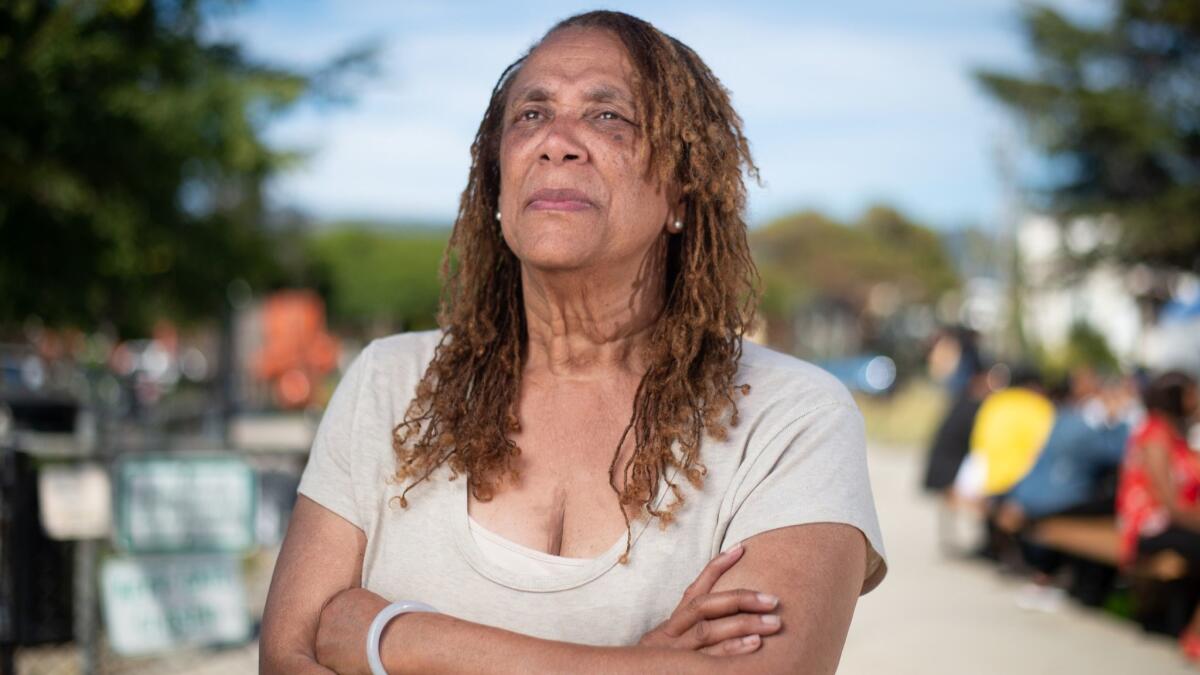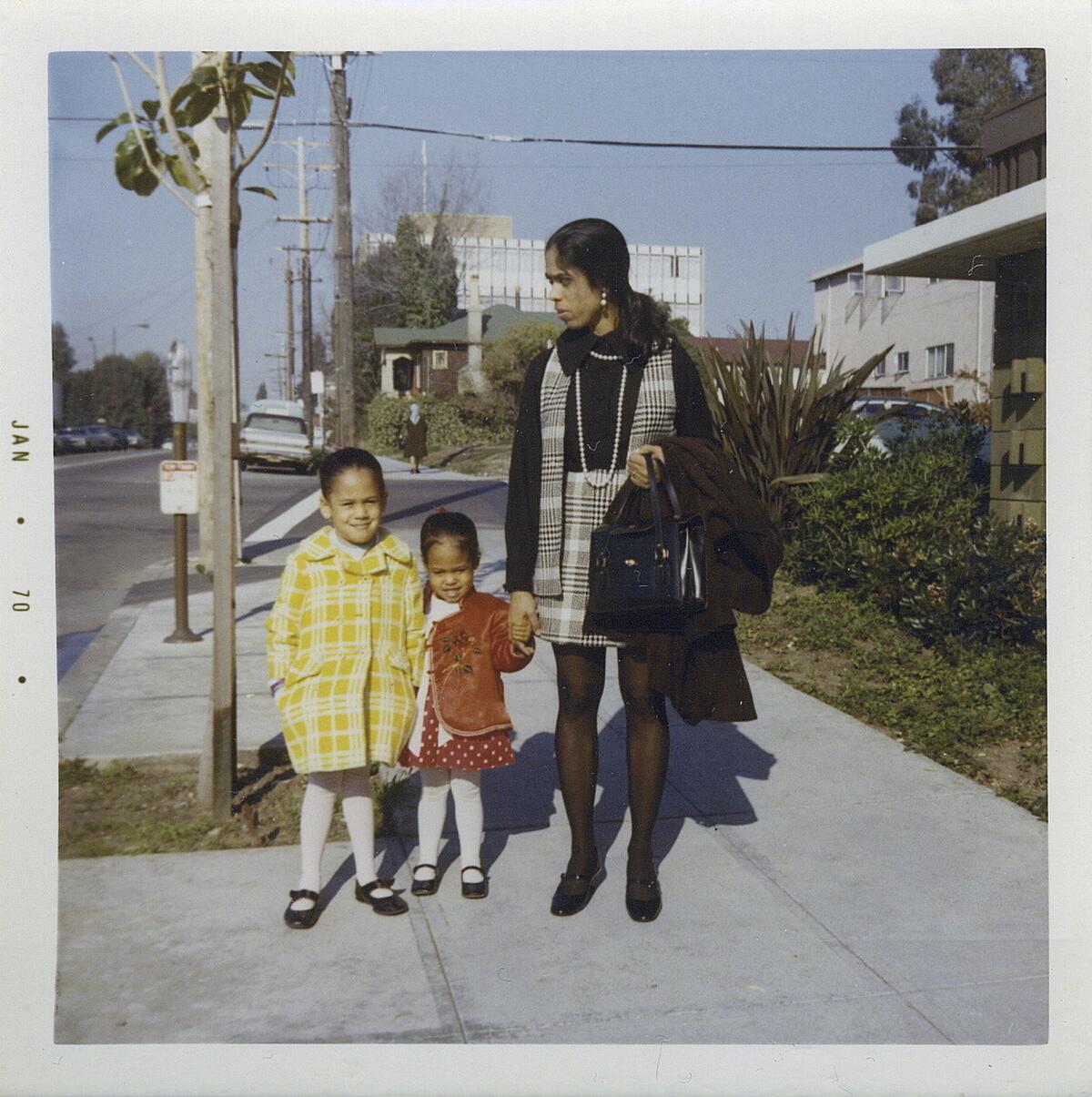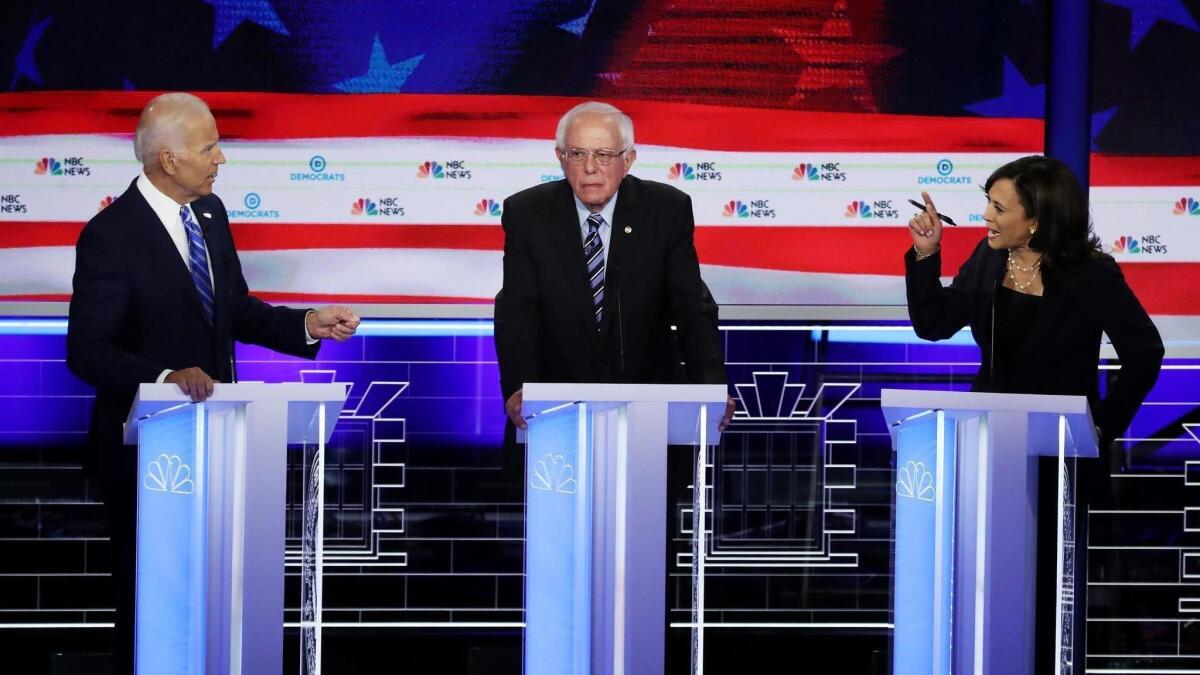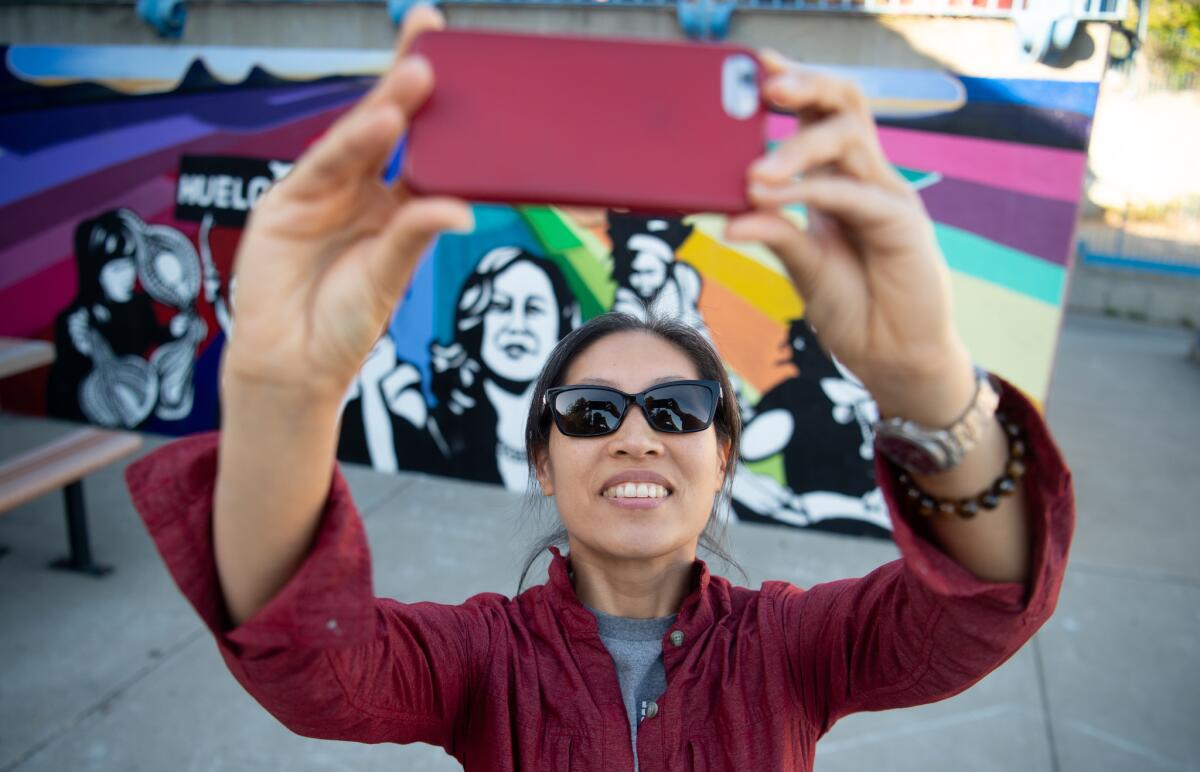School busing in Berkeley during Kamala Harris’ childhood was both voluntary and volatile
- Share via
Reporting from Berkeley — The school bus ride was less than three miles from one side of Berkeley to the other, but from 1969 to 1973 it transported Carole Porter to an entirely different world.
Like her neighbor and friend Kamala Harris, Porter was one of thousands of black children bused into predominantly white neighborhoods to learn. It was part of Berkeley’s bold experiment in desegregation.
But even in a city that had become a worldwide symbol of 1960s counterculture revolt, systemic racial prejudice in education and housing remained deeply entrenched.
“That’s a really hard thing to reconcile,” said Porter, 55. “Berkeley was an oxymoron. It was a contradiction in many ways.”
Harris’ three years of busing from her family’s mainly black working-class neighborhood to a prosperous white enclave in the hills overlooking San Francisco Bay was at once universal and uniquely Berkeley.
As in many American cities, the discriminatory housing policy known as redlining kept blacks from moving into white neighborhoods in Berkeley and busing fueled some white flight to the suburbs.
But unlike other sizable cities, Berkeley undertook its busing program voluntarily and required both white and black families to travel into unfamiliar neighborhoods. Rapid demographic and political changes shielded the community from the most extreme pushback, including violence, that hobbled busing efforts nationwide.
More than 50 years after Berkeley launched its busing program, Harris, one of its most famous participants, thrust it back into the spotlight in last week’s Democratic presidential debate.
As California’s first black senator chastised her rival Joe Biden for his fight against forced busing in the ’70s, she leaned on her personal history in Berkeley, portraying herself as a beneficiary of the charged battle for educational equality.
“There was a little girl in California who was a part of the second class to integrate her public schools, and she was bused to school every day,” Harris said. “And that little girl was me.”

Contrary to its enduring reputation as a progressive mecca, the Berkeley of Harris’ childhood was more politically muddled. The conservative John Birch Society operated two bookstores in the area. It wasn’t until the early 1960s that Democrats cracked a Republican stronghold on the city council. Black residents were restricted to living to the southern and western flats, while whites resided in the northern hills.
Thelette A. Bennett, 71, a retired vice principal of Berkeley High School, grew up in the same neighborhood as Harris.
Bennett’s father, a black World War II Navy veteran, was an airplane mechanic at a local naval air station in 1945, when redlining blocked him and his wife from buying a house in a white neighborhood. Even in the black neighborhood where they settled, she said, they needed to get a white real estate agent to buy a home and transfer it to them.
“There were only certain areas where they could buy a home,” Bennett said. “We lived where they allowed us to live.”
But a large influx of African Americans during and after World War II and whites affiliated with UC Berkeley were pulling the local politics to the left, paving the way for desegregation. Black leaders raised concerns about segregation in the city starting in the late 1950s.
In response, the school board studied the matter, concluding that all but three of the district’s 17 elementary schools and two of the three junior high schools were segregated. (Berkeley High, the city’s only high school, was integrated by default.) In 1964, the school board voted to desegregate its junior high schools.
Residents’ reactions were not as extreme as the segregation battles elsewhere in the country, such as the South, but “it wasn’t as far from that as you might assume,” said Natalie Orenstein, a reporter for local news site Berkeleyside. “There were definitely really angry parents and hours-long school meetings.”
Desegregation opponents launched recall campaigns of multiple school board members over the junior high busing program, but lost by a wide margin.
“When the recall failed, that vote was interpreted by the school board and liberals as a vote to go ahead,” said Charles Wollenberg, author of “Berkeley: A City in History.” “So in 1968, they also began integration of the elementary schools.”

Harris began attending a white school in 1970 as a first-grader. Her mother would kiss her goodbye and then she would walk to the corner and get on the bus to Thousand Oaks Elementary School, Harris wrote in her 2019 memoir. “I only learned later that we were part of a national experiment in desegregation.… At the time, all I knew was that the big yellow bus was the way I got to school.”
Leading the charge was Neil Sullivan, the Berkeley schools superindendent previously tasked with integrating Prince Edward County, Va., which had closed its public schools to defy desegregation orders.
School busing and race tore L.A. apart in the 1970s. Now, Kamala Harris is reviving debate »
“School integration can change attitudes — that is the key factor,” Sullivan wrote in a 1969 book about his Berkeley tenure. “It is our hope that in the integrated school we shall not raise another generation of bigots.”
The Rev. Martin Luther King Jr., in a foreword to Sullivan’s book, said that he had felt discouraged about the progress of school integration nationwide. But upon hearing the Berkeley superintendent’s desegregation plan, “hope returned to my soul and spirit.”
Berkeley was distinct for choosing to integrate on its own, not under duress from the court, and made the busing requirements apply equally to black and white children.
Covering Kamala Harris
“They weren’t just requiring black children to go to school in white neighborhoods,” said Erica Frankenberg, an education and demography professor at Penn State University who researched the Berkeley programs. “They were also saying we need to be equitable in sharing the burden of going further away.... That was extremely rare.”
Some white families embraced the experiment. Sophie Hahn, currently a Berkeley City Council member, said her family moved from neighboring Kensington into the hills of northern Berkeley so she could participate in busing.
From fourth to sixth grade, she rode the bus to Columbus Elementary School (later renamed after civil rights icon Rosa Parks), where most of the students and teachers were black. Hahn learned African history and some Swahili, and the kids sang “Lift Every Voice and Sing,” a civil rights ballad often called the Black National Anthem.
“People were giddy,” said Hahn, 57. “I was brought up thinking that what we were doing in Berkeley was going to change the world.”
But others fled to avoid busing. The district saw a decline in enrollment in the 15 years after integration, from 16,000 students to 9,000, partly fueled by white flight, according to Berkeleyside.
It is our hope that in the integrated school we shall not raise another generation of bigots.
— Former Berkeley schools Supt. Neil Sullivan, in his 1969 book about the city’s busing program
Harris has fondly recounted her early school days.
“Because the students came from all over the area, we were a varied bunch; some grew up in public housing and others were the children of professors,” she wrote in her memoir. “I remember celebrating varied cultural holidays at school and learning to count to ten in several languages.”
Carole Porter similarly spoke warmly of the experience, recalling Swedish, Jewish and Latina friends she made at Thousand Oaks Elementary School — which is now emblazoned with a mural featuring its famous alumna, Harris.
“I think it made me who I am today,” she said.
Her younger sister, Lois Porter, however, said being bused to Thousand Oaks in 1970 for kindergarten was difficult.
“We were treated horribly,” by the white teachers, and the white students “wouldn’t play with us,” she said.
“I just remember it being very tense,” she said. “I didn’t trust white people for a long time.”
The tumult in Berkeley over busing paled in comparison to other American cities. In 1974, court-ordered busing led to violent clashes in Boston. Five years later, Los Angeles voters recalled the school board president who pledged to follow court orders for mandatory busing.
Nearly 90% of the American public opposed busing, according to a Gallup poll in the early 1970s. In Berkeley, just over half of parents opposed busing before it went into effect, and only 30% opposed it once the program was put in place.

Today, Berkeley operates under a newer desegregation plan that is based on socioeconomic and demographic data instead of a student’s race. The original desegregation policy remains a source of civic pride.
“The legacy is that every single kid in Berkeley from grades K-5 has baseline the same resources at their schools, the same quality of teachers school to school,” said Orenstein, the Berkeleyside reporter. “But I think it’s a complicated and unfinished legacy given the persistent achievement gap and equity issues that public school districts everywhere are faced with.”
For the black students of those first integrated classes, the socializing and networking with white children was just as crucial as the classroom learning, said Carole Porter. She believes it formed a springboard for Harris’ presidential ambitions.
“She would not be where she is today if she had not had that opportunity,” she said.

Times staff writers Michael Finnegan reported from Berkeley, Seema Mehta and Melanie Mason from Los Angeles.
More to Read
Get the L.A. Times Politics newsletter
Deeply reported insights into legislation, politics and policy from Sacramento, Washington and beyond. In your inbox three times per week.
You may occasionally receive promotional content from the Los Angeles Times.














